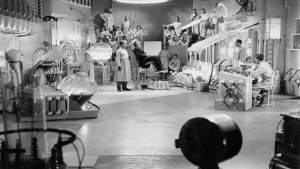In one of our previous book, we proposed that we « free the future from the past » when doing futurism or design fiction work. The basic idea was to say that when we look at the future, we tend to rely of past visions of that future, hence limiting our possibilities and the creation of truly creative approaches.A growing track of research in the field of neuroscience and psychology tend to add credibility to this hypothesis. The fact that past and future are linked at the neurological level is a well-known fact today.
In his book Predicting in the brain. Our past to generate a Future, Moshe Bar shows that, to simulate the future, our past memory is still the raw material that is used to make judgements, decisions and forecasting . So, even if it is counter-intuitive, our memory is not always about past event, it could also be about a future event, a concept called “prospective memory”, meaning the memory for actions to be performed in the future (as defined by Einsetein & McDaniel in 1990). This is the basis of our human ability to project into the future and make decisions. For the famous neuroscientist Daniel Schater, we should call our brain a “prospective brain” in order to depict the centrality of this set of tasks on brain organization. The issue is then how to rely on those recent discoveries to manage our forecasting job in design and creativity. A recent and fascinating study has been led by Jeffrey M. Sachs that gives an interesting insight on this subject.
The researcher has looked into our daily small predictions in order to understand how they work. In fact we spend most of our life analyzing a contest, and inferring what is going to happen next : « the bell is ringing, and I am expecting a package = DHL is here ». This is very helpful because it allows us to be faster, and to run when we encounter a wild lion in New York running at us. Nevertheless, even if this process is usually going smoothly, it sometimes does not work perfectly and our predictions can end up being wrong.
In order to test this, the researcher and his team showed videos of everyday life (i.e a succession of events such as opening a door, playing legos etc.) to some subjects and asked them to predict what was about to happen next by selecting an image showing the following event. Not surprisingly, while asked to do so during an event, most of the people where capable of getting it right. But, when at the boundary of an event, the ration fella (????)and subjects where less confident in their predictions. When done in an fmri, the test show that the Mid Brain Dopamine System is lighting up, which is the part of the brain where the adaptive decisions are partly made.
So, if we go back to our « free the future from the past », and use Zach’s work as a metaphor, what we can highlight ?
- First of all, when we make predictions, we base our thinking on past occurrences. So, if we want to freely speculate about tomorrow, we need to be able to list « past futures », i.e past visions of the futures that we have in our mind and set them aside.

We should be cautious when looking at “past visions of the future”
- Secondly, when we look at a trend, we might be able to understand what is going to happen after, but we clearly not good at « boundary thinking ». Put in others words, we know how to end the story, not how to start the next chapter. The is key in futuring since the issue is not really to predict the next logical steps, but what comes after. Pivotal events are key issues to help envisioning future worlds. If you ask someone to push further a trend, it is going to be a rather easy job. And probably wrong since it wil mostly rely on memories from the past: something powerful to deal with everyday tasks, but less powerful when trying to envision the world in 20 years. To put it in a nutshell, building strange and unplanned pivots are not only key, they are mandatory tools to be more relevant.

